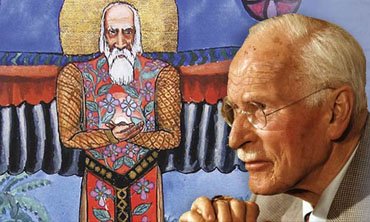AZTLAN CULTURAL CENTER
of Psychology, Philosophy, and Humanities.
Dir.: León Azulay
Civil Association I.G.J. No. 748

Jung's Archetypes
Jung used the term "Archetypal" to describe all psychological realities of a biological and psychobiological nature.
The ability of a newborn to suckle is archetypal, as is smiling, frowning, crying, and all those actions repeated in reference to behaviors and gestures that make us human beings. Some "unilateral extroverted psychologies" argue that these qualities are programmed from the outside because they believe that, at birth, the human psyche is a "tabula rasa." Jung argued that there is an archetypal potential in the child without which it could never be "programmed." Innate in most animals, this layer or archetypal predisposition is expressed from the very first moment of life, as seen in the archetypal need to relate to a maternal figure. This urgent need for a mother is a very simple example and an introductory one, in fact, of what Jung calls archetypes. Rituals of social interaction, mating processes, ways of perceiving and evaluating what is perceived, among others, constitute a series of archetypes of behaviors endlessly repeated among human beings.
The concept of the collective unconscious (this unconscious, where archetypes reside, a timeless psychic layer shared by all humanity) has "irked" some people, probably because the idea of a collective unconscious seems to reduce the possibility of a unique and independent Ego. In reality, just as we have personal characteristics that make us unique, we also have to experience certain archetypal experiences or lessons. Protagoras, a Greek philosopher, abandoned this idea in writing many centuries ago when he declared that "Man is the measure of all things." This means that nothing will happen to man that is not inherent in his human nature. In other words, by analogy, what happens to the sparrow will be what happens to its species and what happens to the lions to the lion species. Everything concerning us is as unique as our fingerprint or DNA, although at the same time, we are merely human beings. Like paradoxes, it is a new idea at first, although, as we have already mentioned, it existed many centuries ago in Philosophy.
If we look around a room illuminated by bulbs and lamps, we will easily deduce that the energy or electricity is the same in each of them. This image offers an idea of the nature of the collective unconscious. Each of us is a unique, separate, and distinct light source, with a specific voltage and brand, but the life principle in each of us is the same: "electric energy." This idea may go against us (egocentrism), but if we examine it deeply and intensively, we will see that it is true. We are a personal and impersonal being at the same time. The main archetypes expressed in us in our times, as described by Jung, are: the Persona (or the "mask"); Anima and Animus (sexual archetypes); the Shadow (what is hidden); the Self as a synonym for real or Objective Consciousness (hidden within us until we make it conscious). It is our choice to decide to make the archetypes conscious, which encourages us to achieve a more conscious and integrated life, or to continue in the darkness of ignorance.
















